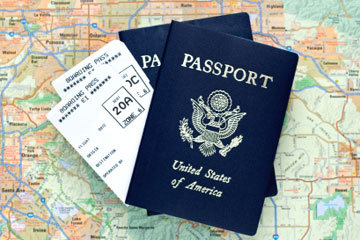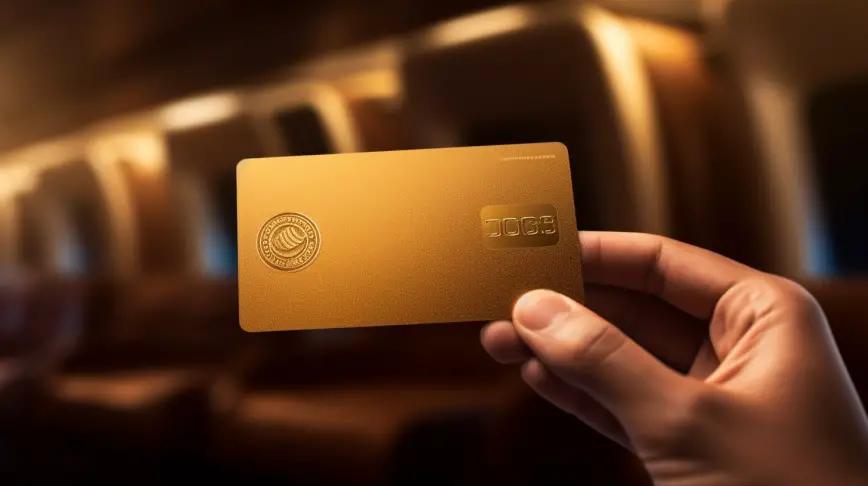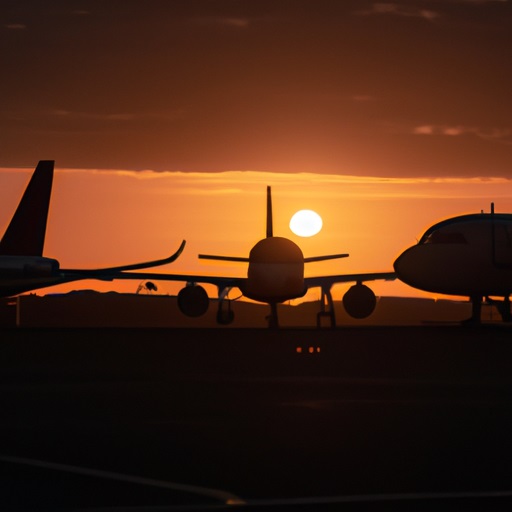
Are Frequent Flyer Programs Worth It?
Frequent flyer programs offered by airlines provide rewards and benefits to travelers who frequently fly with that airline. These programs allow members to earn points, miles, or segments that can be redeemed for free flights, seat upgrades, and other perks. But are these programs really worth joining and actively participating in? Here is an in-depth look at the pros and cons of frequent flyer programs.
How Frequent Flyer Programs Work?
Frequent flyer programs vary by airline, but they generally work on a basic reward system. Each flight you take earns you a certain number of points, miles, or flight segments based on the fare class of your ticket, distance flown, and your membership status level.
Once you’ve accumulated enough rewards in your account, you can redeem them for free flights and other benefits. Most programs use a redemption chart that outlines how many points are needed for different flight redemptions. Generally, domestic flights cost fewer points than international itineraries. Business and first class awards are significantly higher.
In addition to free flights, programs let you use points for seat upgrades, hotel stays, car rentals, merchandise, gift cards, transfers to partner loyalty programs, and more. Some even allow you to donate miles to charity.
As you earn more points and fly more with one airline, you reach elite tiers that bring additional perks like:
- Priority boarding
- Lounge access
- Fee waivers
- Bonus miles
- Complimentary upgrades
- Dedicated customer service lines
Accruing Points and Miles
The fastest way to rack up a frequent flyer balance is by taking flights and spending money directly with the airline. Most programs award:
- 5-10 points or 1-2 miles per $1 spent: This usually includes base airfare and government taxes and fees. Some airlines also let you earn points when booking partner flights.
- Bonus points/miles for booking higher fare classes: First class, business class, and premium economy tickets earn extra rewards.
- 1,500+ bonus miles per flight: You usually get a 500-mile minimum per flight plus additional mileage based on route distance.
On top of flying, you can add to your account balance through:
- Airline-affiliated credit cards
- Hotel stays, car rentals, dining
- Online shopping portals
Elite Status Qualification
All programs have elite tiers that bring added benefits once you hit certain thresholds. For most airlines, you need to earn 25,000-100,000 elite qualifying miles (EQMs) and/or take 30+ elite qualifying flights (EQSs) in a year to reach mid-tier status levels like Silver. Top-tier levels like Platinum or Diamond requires 75,000-125,000 EQMs and $9,000-$15,000 in annual spending with the airline.
EQMs are miles actually flown, while EQSs count flight segments taken. Both EQMs and EQSs must be earned on the airline to qualify towards status.
Using Miles for Awards
Once you’ve collected a healthy mileage balance, it’s time to start redeeming. Most programs classify award availability into different tiers:
- Low-level awards – Least restricted but limited availability. Cheapest options.
- Mid-tier awards – More availability than low-level but cost more miles.
- High-tier awards – Most availability but expensive. Usually double the miles required for low-tier.
Domestic economy class awards generally start around 12,500-25,000 miles for a one-way trip, while a business class ticket could be 50,000-70,000 miles. International economy flights may start at 30,000-60,000 miles each way, with business class over 100,000 miles.
Factors like peak holiday travel periods, route demand, and how far in advance you book affect award pricing and availability. Programs release only a limited amount of low-tier award seats on each flight, making them hard to come by. Being flexible with your travel dates and airports can help find openings.
Most airlines levy close-in booking fees within 21 days of departure, charging extra miles for last-minute awards. You’ll also pay fuel surcharges on international redemptions that can add hundreds of dollars in taxes and fees.
The Pros of Frequent Flyer Programs
Free Flights and Upgrades
The top benefit of mileage programs is using accumulated points and miles for free flights. Even a round-trip domestic ticket can cost $300-$500, so a single award redemption can often offset the cost of joining the program and then some. Business and first class awards represent huge savings worth thousands of dollars.
Similarly, programs allow you to redeem miles for upgrade certificates. Applying an upgrade to get a business class seat on an international flight that normally costs $5,000 or more provides tremendous value.
Elite Status Perks
Reaching elite tiers brings valuable benefits that enhance the airport and in-flight experience:
- Priority services – accelerated check-in, security lane access, priority boarding, expedited baggage delivery, and dedicated customer service lines make travel less stressful.
- Lounge access – enjoy complimentary food, drinks, Wi-Fi, and a place to relax before your flight at airline lounges and partner spaces.
- Fee waivers – elite status often equals waived baggage and change/cancellation fees.
- Bonus miles – programs award extra 25-125% miles per flight for elites.
- Complimentary upgrades – airlines upgrade elites to business/first class for free if seats are available at check-in or departure.
These perks improve comfort and make flying cheaper. The value can really add up for frequent travelers.
Earning Miles Across Multiple Merchant Categories
Airline points aren’t just for flights – you can earn across many bonus spending categories:
- Branded credit cards – big sign-up bonuses, points on everyday purchases, extra miles on airfare
- Hotel stays – top co-branded hotel cards like Hilton and Hyatt transfer points to airline partners
- Car rentals – programs like Avis Preferred offer airline points
- Shopping portals – online retailers provide bonus miles
- Dining programs – rewards network dining lets you earn for restaurants
There are myriad ways to pad your frequent flyer miles through everyday spending.
Global Alliance Partnerships
Major carriers participate in one of three major global airline alliances:
- Star Alliance (United, Lufthansa, Air Canada)
- oneworld (American, British Airways, Qantas)
- SkyTeam (Delta, Air France, KLM)
Within each alliance, member airlines let you earn and redeem miles and elite status across any partner. This greatly expands redemption possibilities to more regions worldwide. Partners also provide lounge reciprocity. These partnerships enable earning more rewards from flights on multiple airlines.
The Cons of Frequent Flyer Programs
Award Availability Issues
The most common complaint is lack of low-tier award seat availability. Airlines often only release only 1-2 award seats per flight rather than proportionally matching the number of seats sold. Flights to popular destinations like Hawaii see awards snapped up nearly 11 months in advance. Even if you have enough miles, scarce award inventory makes redeeming frustrating. Being flexible helps, but availability is the biggest challenge.
Devaluations and Program Changes
Mileage programs frequently devalue their currency by unilaterally raising award redemption costs overnight. What once cost 25,000 miles might now be 60,000 for the same flight. They also restrict routes, implement blackout dates, raise upgrade requirements, and tighten rules – often without notice. Constant devaluations diminish the value of miles.
Lost Miles from Inactivity
One frustration is having miles expire after long periods of account inactivity, usually 18-24 months of earning no new miles. While credit card points seldom expire, you must take care to keep frequent flyer miles active either by taking flights or using co-branded credit card. Set calendar reminders to avoid losing an account balance.
Taxes, Surcharges, and Fees
A downside of awards is that you still must pay taxes and government-imposed fees which are often $50-$200 each way. Partner awards often add hefty carrier surcharges and high fees making so-called “free” tickets cost hundreds of dollars out of pocket. This cuts into the value.
Restrictions and Blackout Dates
Finding award seats often means avoiding peak holiday periods like Christmas week when no seats are available at any mile cost. Even off-peak dates can be blacked out for partner awards. Try being flexible at least 21 days from departure. Still, key restriction dates present challenges to redeeming awards.
Is it Worth it for Infrequent Flyers?
For very casual travelers who may fly just once or twice a year, mileage programs are lower value propositions given how long it takes to accumulate enough for an award. At 25,000 miles for a round-trip domestic ticket, a twice-annual flyer would need 2-4 years to earn enough for a free flight. Families can pool miles into one account to accelerate rewards.
But for recurring work or personal travelers, the elite perks and award redemptions provide higher reward potential and value to justify participating.
Tips for Getting the Most from Frequent Flyer Programs
- Consolidate spending on one airline: Try concentrating most flights and credit card spending on a single program rather than dividing across multiple airlines. This helps rack up points quicker.
- Use shopping portals: Online shopping through airline portal like Delta SkyMiles, American AAdvantage or United MileagePlus earns bonus miles at hundreds of retailers.
- Book with points/miles for business travel: If your company allows it, you can book paid tickets through the airline site and pay with miles to earn points for work flights.
- Share miles with family: Most programs let you transfer miles between household member accounts for free. Pooling together makes redemptions easier.
- Target airline credit cards: Sign-up bonuses offer 25,000-100,000 miles – a great way to jumpstart your balance. Use for everyday spend.
- Fly more to earn status: Book longer flight itineraries which award more miles and help qualify for elite tiers faster.
- Be flexible with dates/destinations: Find more award availability by tweaking dates or flying into alternate airports. Mid-week flights have more seats.
- Watch for bonus promotions: Take advantage of special seasonal offers that award double/triple miles on flights or partner activity.
- Monitor account for expiring miles: Keep miles active by setting calendar reminders and earning new miles before expiration.
- Fly premium cabins: Paying to upgrade or redeeming miles for business/first class maximizes the value received per mile.
Is It Worth Paying for Faster Qualification?
Many programs now offer ways to fast-track elite status or mileage earnings through paid subscription plans, status challenges, or class of service multipliers. These include:
- United Premium Plus – $599 for instant Premier Platinum status, extra award availability, and mileage multipliers.
- American Airlines Elite Status Boost – offers double Elite Qualifying Miles and Segments for $399-$599 per segment.
- Delta Medallion Qualification Miles – buy up to 15,000 MQMs for $495 to $2,995 to boost status.
- Alaska Airlines MVP Gold Guest Upgrades – instant Gold status plus $250 for 40,000 bonus miles.
For very frequent travelers who fly multiple times per month, the perks and mileage boosts of paid elite status packages can pay off by getting you upgrades and rewards faster. But more casual flyers may not recoup the extra costs through their limited flight activity. Crunching the numbers is key.
Which Airline Programs are Most Rewarding?
While frequent flyer programs share similarities, they vary in their quirks and nuances. Overall, experts tend to agree that the following programs offer stronger overall value and award redemption ease to their members:
- Alaska Airlines Mileage Plan – generous domestic award rates, multiple partners like American and Delta, reasonable elite criteria of just 20,000 miles for lowest status.
- Southwest Rapid Rewards – simple award chart based on fares (not miles), reasonable redemption rates, companion pass benefit, no change/cancellation fees.
- JetBlue TrueBlue – points never expire, Mosaic status offers great ROI for meeting thresholds, extensive flight network.
- Singapore Airlines KrisFlyer – rewards Star Alliance partner flights, elite recognition across alliance, low fees, generous bonus mile promotions.
On the flip side, Delta’s Skymiles, British Airways’ Executive Club, and United’s MileagePlus tend to draw more member frustration over program devaluations and award seat scarcity. But each airline has its loyalists.
Should You Ditch Traditional Programs for New Entrants?
A number of upstart programs from low-cost carriers have entered the market as an alternative to legacy airline rewards. These include:
- Frontier EarlyReturns – status tiers with family pooling and transferable miles.
- Breeze Airways BreezePoints – easy earn and redemption with online shopping bonuses.
- Sun Country Rewards – traditional elite tiers and benefits, points earned on fares.
- Spirit Airlines Free Spirit – credit card earns points good for any purchase erasing blackout dates.
The appeal is earning on low fares and redeeming without convoluted award charts. But drawbacks are less robust partnerships and smaller flight networks. Yet for budget-conscious leisure flyers, these newer plans can provide value. Their simplicity and flexibility around redemptions is a plus. But road warriors may still favor legacy carriers for class-of-service upgrades, lounge access, and global partners.
The Bottom Line on Frequent Flyer Programs
For regular travelers, mileage programs offer outstanding upside through free flights, elite perks, and everyday earning potential. Even occasional flyers benefit from awards, fee waivers, and account pooling. Joining at least one major airline program makes sense for most. But beware of devaluations and know the tricks like shopping portals. Treat miles like a currency with variable exchange rates. Overall, frequent flyer programs remain hugely rewarding for savvy travelers who understand how to maximize their benefits.
Frequently Asked Questions (FAQ)
How do you get frequent flyer miles fast?
Some tips for quickly earning more miles:
- Open and spend on co-branded airline credit cards
- Book longer haul routes that award more miles
- Buy miles during bonus promotions
- Transfer points from flexible programs like Chase Ultimate Rewards
- Shop via online airline shopping portals
- Meet status thresholds to earn elite mile bonuses
What is the best frequent flyer program for international flights?
For international trips, these programs offer solid redemption value:
- Singapore Airlines KrisFlyer
- British Airways Executive Club
- United Airlines MileagePlus
- American AAdvantage
- Delta SkyMiles
All have extensive global route networks thanks to their alliance partnerships. Awards on premium cabins provide exceptional value.
What is the easiest frequent flyer program to earn status?
Some of the most attainable status tiers based on lowest annual flight mileage or segment requirements:
- Alaska MVP Gold (20,000 miles)
- Southwest A-List (25 one-way flights)
- JetBlue Mosaic (30 segments, 12,000 points)
- Delta Silver Medallion (25,000 MQMs or 30 MQSs)
- American Gold (25,000 EQMs or 30 EQSs)
Can you use frequent flyer miles on any airline?
Generally miles from one airline’s program can only be used to book award flights on that same airline, or within its global alliance network partners in most cases. MileagePlus miles could book a United or Singapore flight, but not American. Points don’t transfer between unrelated airlines. You can’t use Delta miles to fly Southwest. Credit card points can transfer between multiple airline partners.
How do you redeem miles for maximum value?
Tips for higher value redemptions:
- Book high-demand business or first class seats
- Use miles for expensive last-minute fares
- Fly further distance routes with better redemption rates
- Take advantage of bonus mile promotions
- Transfer mileages to loyalty program partners
How can you use frequent flyer miles other than flights?
Popular options for redeeming miles outside of airfare:
- Hotel stays
- Car rentals
- Merchandise and gift cards
- Magazine subscriptions
- Charitable donations
- Transfer points to other loyalty programs
- First class lounge day passes
- Food and beverages in airport lounges
Are premium frequent flyer cards worth it?
Pricier airline credit cards with high annual fees around $400-500 tend to offer more value and perks for frequent flyers, like:
- Access to more low-level award inventory
- Annual companion tickets or companion fare discounts
- Loyalty points or miles bonuses
- Upgraded elite status
- Airline fee statement credits
- Lounge access
For regular travelers, premium airline cards can offer strong ROI, but they are harder to justify for infrequent flyers.






